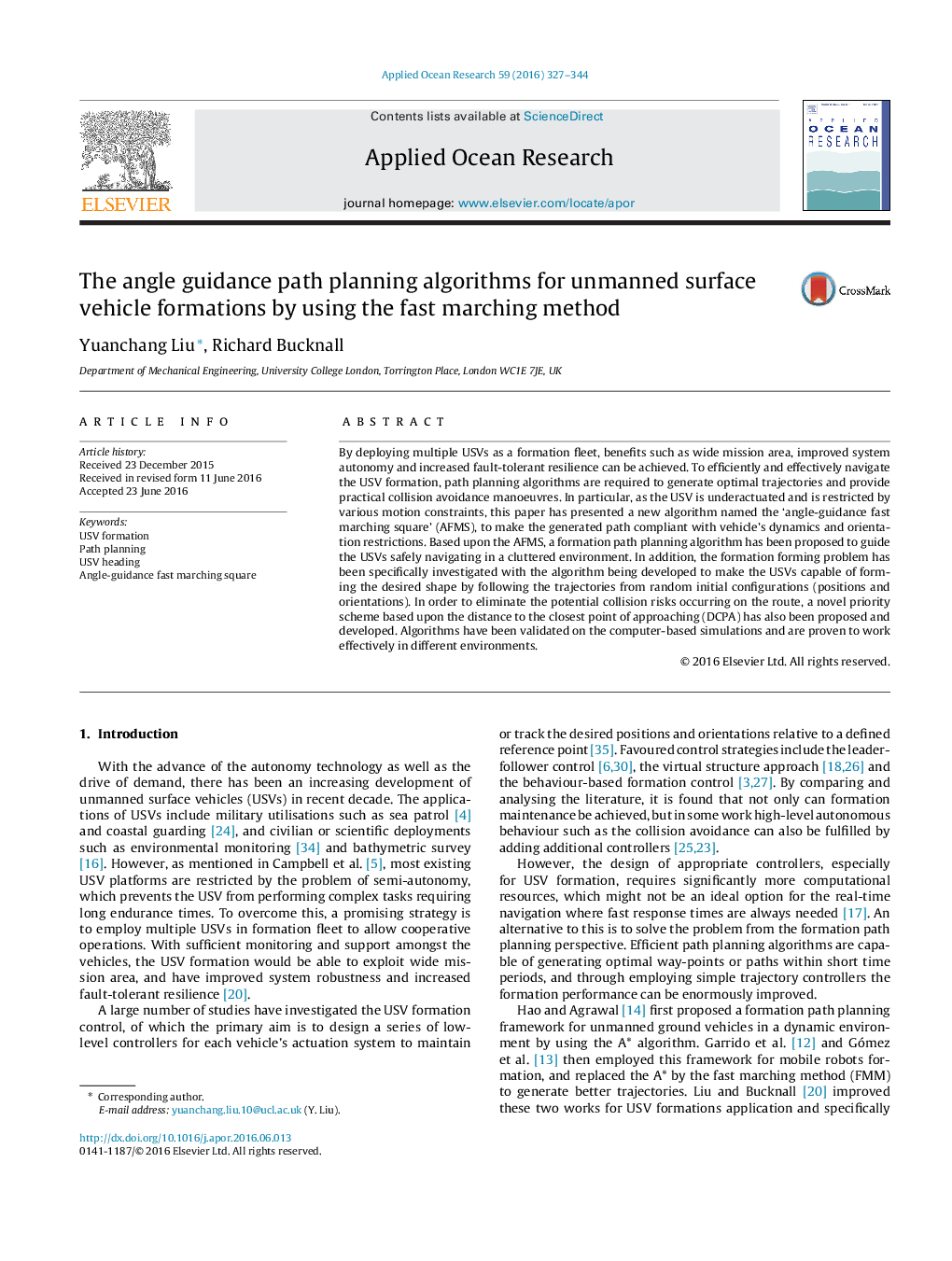| Article ID | Journal | Published Year | Pages | File Type |
|---|---|---|---|---|
| 1719785 | Applied Ocean Research | 2016 | 18 Pages |
•The intelligent collision-free USV formation path planning has been studied.•USV formation forming and path planning problems have been investigated.•The angle guidance fast marching square method is proposed to provide practical paths.•A novel priority scheme has been developed to eliminate the conflicts en route.
By deploying multiple USVs as a formation fleet, benefits such as wide mission area, improved system autonomy and increased fault-tolerant resilience can be achieved. To efficiently and effectively navigate the USV formation, path planning algorithms are required to generate optimal trajectories and provide practical collision avoidance manoeuvres. In particular, as the USV is underactuated and is restricted by various motion constraints, this paper has presented a new algorithm named the ‘angle-guidance fast marching square’ (AFMS), to make the generated path compliant with vehicle's dynamics and orientation restrictions. Based upon the AFMS, a formation path planning algorithm has been proposed to guide the USVs safely navigating in a cluttered environment. In addition, the formation forming problem has been specifically investigated with the algorithm being developed to make the USVs capable of forming the desired shape by following the trajectories from random initial configurations (positions and orientations). In order to eliminate the potential collision risks occurring on the route, a novel priority scheme based upon the distance to the closest point of approaching (DCPA) has also been proposed and developed. Algorithms have been validated on the computer-based simulations and are proven to work effectively in different environments.
